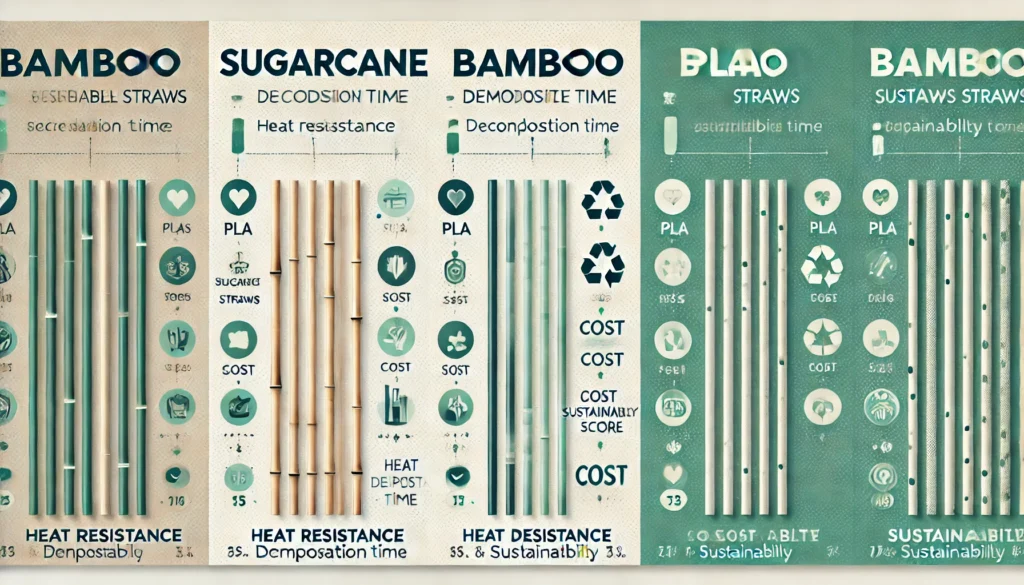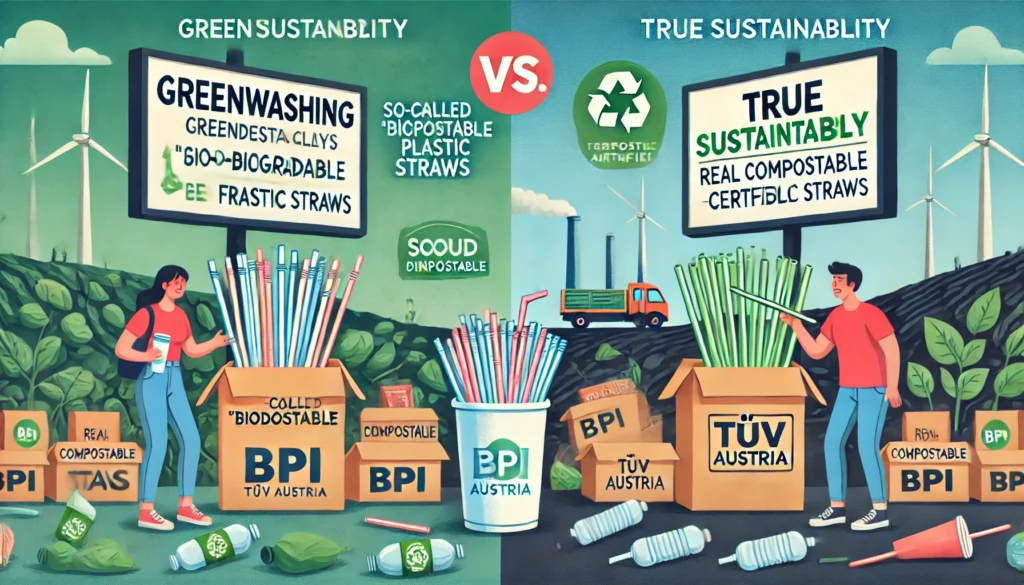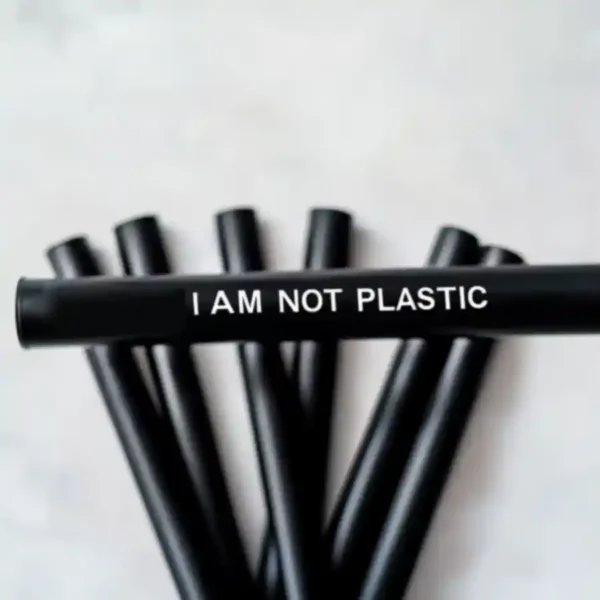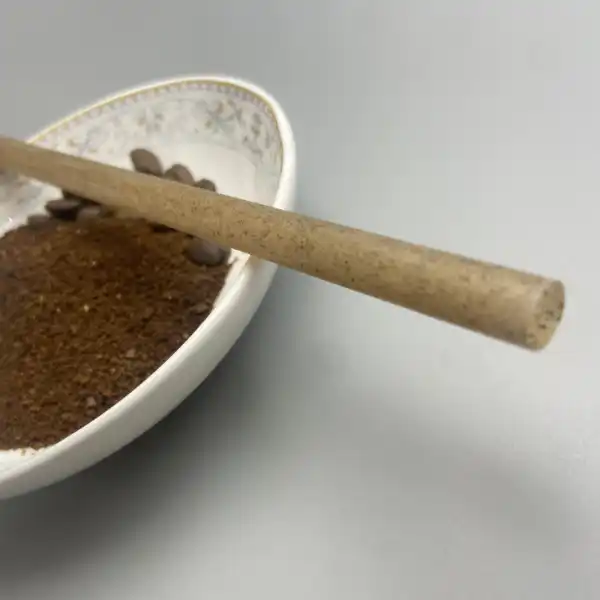
The Plastic Straw Problem: Why We Need Alternatives
Quick stats on plastic straw pollution:
- 8.3 billion plastic straws pollute global beaches annually (National Geographic).
- Plastic straws rank among the top 10 ocean pollutants, harming over 1 million seabirds and 100,000 marine mammals yearly.
How single-use plastics harm marine ecosystems:
Plastic straws don’t biodegrade but photodegrade into microplastics, which persist for 500+ years. Sea turtles often mistake them for food, causing intestinal blockages. A 2023 study found microplastics in 90% of table salt samples worldwide – meaning your margarita salt might contain remnants of last summer’s poolside straw.
Want to explore the best eco-friendly straw alternatives? Check out our guide: Best Eco-Friendly Straw Alternatives.
Breaking Down 5 Popular Eco Straw Materials
| Material | Decomposition Time | Wärmewiderstand | Cost per 100 Units |
|---|---|---|---|
| Sugarcane | 60-90 days | Up to 176°F | $12.50 |
| PLA Plastic | 6-12 months* | 122°F | $8.99 |
| Bambus | 4-6 months | 212°F | $22.00 |

Key Takeaways:
- Sugarcane Straws: Made from bagasse (crushed sugarcane stalks), these withstand hot drinks but turn soggy after 2 hours.
For a detailed comparison between sugarcane, paper, and PLA straws, see: Sugarcane vs Paper/PLA Straws. - PLA “Biodegradable” Straws: Derived from cornstarch, they only decompose in industrial facilities – not your backyard compost.
- Bamboo Straws: Naturally antimicrobial but require scrubbing with pipe cleaners to prevent mold.
Myth-Busting: Biodegradable vs. Compostable Straws
Why Most “Biodegradable” Claims Are Misleading
A straw labeled “biodegradable” could take 1,000 years to break down in a landfill. True compostable straws require specific conditions:
- BPI-Certified Compostable: Breaks down in 12 weeks at 140°F (industrial facilities only).
- Home Compostable (TÜV Austria OK Compost HOME): Decomposes in 6 months under backyard conditions.

Learn more about the differences between biodegradable and compostable straws here: Biodegradable vs Compostable Straws.
Additionally, discover the full journey from production to decomposition with our guide on the Compostable Straw Lifecycle.
The Dirty Secret of “Green” Straw Production
Carbon footprints compared:
- Paper Straws: Produce 60% more CO₂ during manufacturing than plastic.
- Sugarcane Straws: Utilize agricultural waste, cutting emissions by 72% versus virgin plastic.
Case Study: Sugarcane Straws
Brazilian manufacturers now convert 300 tons of bagasse daily into straws – a byproduct previously burned, releasing methane.
Practical Guide: Choosing and Maintaining Eco Straws
Storage hacks:
- Bamboo: Store upright in a breathable container with coarse salt to absorb moisture.
- Stainless steel: Use silicone-tipped versions to prevent tooth damage.
For tips on maximizing your eco-friendly straws’ shelf life, check out our guide: How to Store Eco-Friendly Straws.
When to avoid compostable options:
- Airplanes (low humidity accelerates disintegration)
- Milkshakes (thick liquids require 30+ minutes of sipping)

The Future of Sustainable Sipping
Emerging innovations:
- Edible Straws: Infused with flavors like cinnamon or chocolate (LastSwab’s candy-straw hybrid dissolves in 20 minutes).
- Mycelium Straws: Grown from mushroom roots in 9 days, fully compostable in 45 days.
CTA:
“Tried switching to reusable straws? Share your #EcoSipFail stories below – we’ve all had that iced coffee disaster!”
Internal Links:
External Sources:
Final Tip: Carry a collapsible silicone straw on your keychain – it outlives trendy alternatives and survives washing machines.







